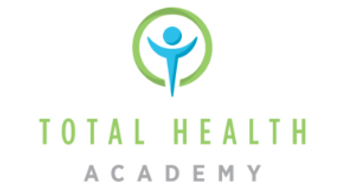For Medical Providers
In October 2017, the American Dental Association (ADA) passed a resolution entitled, “The Role of Dentistry in the Treatment of Sleep Related Breathing Disorders” (SRBD). See attached .pdf for full statement, here is a summary:
Dental professionals are well positioned to screen patients for:
- snoring
- Obstructive Sleep Apnea (OSA)
- Upper Airway Resistance Syndrome (UARS), and other SRBD
OSA has been associated with:
- metabolic disease
- cardiovascular disease
- respiratory illness
- dental malocclusion and bruxism
In children, undiagnosed and/or untreated OSA can be associated with:
- cardiovascular problems
- impaired growth
- learning and behavioral problems
Contact Us for further assistance or to schedule a Consultation to add Airway Dentistry to your practice.
More Details
Dentists play a vital role in the comprehensive care of patients with certain Sleep-Related Breathing Disorders (SRBD). Given the multifaceted nature of these conditions, optimal treatment often involves a collaborative approach with medical professionals.
In children, dentists can contribute significantly to managing SRBD by identifying signs of suboptimal craniofacial growth and development or other risk factors early on. This recognition may prompt medical referral or orthodontic/orthopedic intervention aimed at treating or preventing SRBD.
Treatment options for SRBD encompass a range of approaches, including surgery and Oral Appliance Therapy (OAT). Dentists possess unique expertise and knowledge to provide OAT, making them indispensable in the management of these disorders.
Airway Screening
Dentists are encouraged to incorporate screening for Sleep-Related Breathing Disorders (SRBD) into their routine patient assessments, encompassing both medical and dental history. Recognizing symptoms such as daytime sleepiness, gagging, snoring, or witnessed apneas is crucial, along with evaluating risk factors like obesity, retrognathia, or hypertension.
In pediatric patients, screening involves a thorough examination of history and clinical indicators to identify potential signs of deficient growth and development or other risk factors predisposing to airway issues. Upon recognizing the risk for SRBD, appropriate intervention, including medical or dental referral or evidence-based treatment, can be initiated to address the condition and promote optimal physiological airway function and breathing patterns.
To aid in the screening process, consider using these resources, also found on the Screening Tools page:
FAirEST.org: A comprehensive resource for screening and assessing airway and breathing issues. Additionally, here are some more screening tools to facilitate the process:

Office Implementation
If you’re prepared to screen and treat Sleep-Related Breathing Disorders (SRBD), we suggest using an office-based system known as the Total Health Academy (THA).
THA offers a self-paced, digital-learning platform designed for doctors and their teams, equipping them with the knowledge and systems needed to effectively screen, treat, and prevent Sleep Disordered Breathing (SDB), inflammation, diabetes, and other oral and systemic diseases.
We are here to provide guidance on accessing the resources and training necessary to integrate SRBD treatment into your practice. Feel free to Contact Us for further assistance or to schedule a Consultation.


Summary
Sleep-Related Breathing Disorders (SRBD) can often stem from factors such as low tongue posture and soft diets, resulting in decreased mouth size, retrognathic maxilla, and malocclusion. Habitual suction of the tongue to the palate encourages the development of a wide arch, nasal sinuses, and forward growth of the maxilla. Historically, the act of chewing and strengthening the alveolar process for approximately 1.5 hours per day allowed for the accommodation of all 32 teeth. However, modern children frequently consume soft, processed foods and drink them through pouches, leading to underdeveloped alveolar ridges, lingually inclined posterior teeth, and disrupted neutral zones.
Various factors like tongue ties, bottle feeding, pouch feeding, thumb sucking, and pacifiers can contribute to a narrow arch, deviated septum, and congestion. Habitual mouth breathing often precedes chronic nasal congestion, enlarged adenoids and tonsils, dry mouth, and cavities, all of which influence craniofacial respiratory changes. The low tongue posture of habitual mouth breathers can result in a longer face with a higher gonial angle that grows downward and backward toward the airway, narrowing it and potentially leading to less oxygen reaching the brain and fragmented sleep. Symptoms such as sweating, bedwetting, sleep apnea, night terrors, snoring, and restless sleep may manifest in affected children.
Screening and treating SRBD typically follow a preventative rather than a reactionary medical approach due to the multifactorial nature of each patient’s case. Treatment options often involve a combination of lifestyle modifications and individualized interventions. Interestingly, transitioning from mouth to nose breathing in pediatric airway patients can reduce the long-term risk of developing hypertension, cardiovascular disease, and type II diabetes in adulthood.
In addition to Oral Appliance Therapy (OAT), adjunct therapies like Myofunctional Therapy, Frenuplasty, expansion orthodontics, and the Buteyko Breathing Method have proven useful in treating SRBD and craniofacial disorders.
Furthermore, our noses are uniquely designed to process the air we breathe by filtering, warming, humidifying it, and providing nitric oxide from the paranasal sinuses. For more in-depth analysis, refer to leading White Papers, and explore Recommended Books & Products that facilitate nasal breathing during both daytime and sleep.
Education & Understanding
SUPER BREATHERS® LLC PROVIDES THE INFORMATION ON THIS PAGE FOR EDUCATIONAL PURPOSES ONLY
All content found on the superbreathers.com website, including text, images, video, or other formats were created for informational purposes only. The content of this website is not intended to be a substitute for professional medical advice, diagnosis, or treatment. Always seek the advice of your physician or other qualified health provider with any questions you may have regarding a medical condition. Never disregard professional medical advice or delay in seeking it because of something you have read on this website.
© 2025 by Kelley Richardson | SuperBreathers
